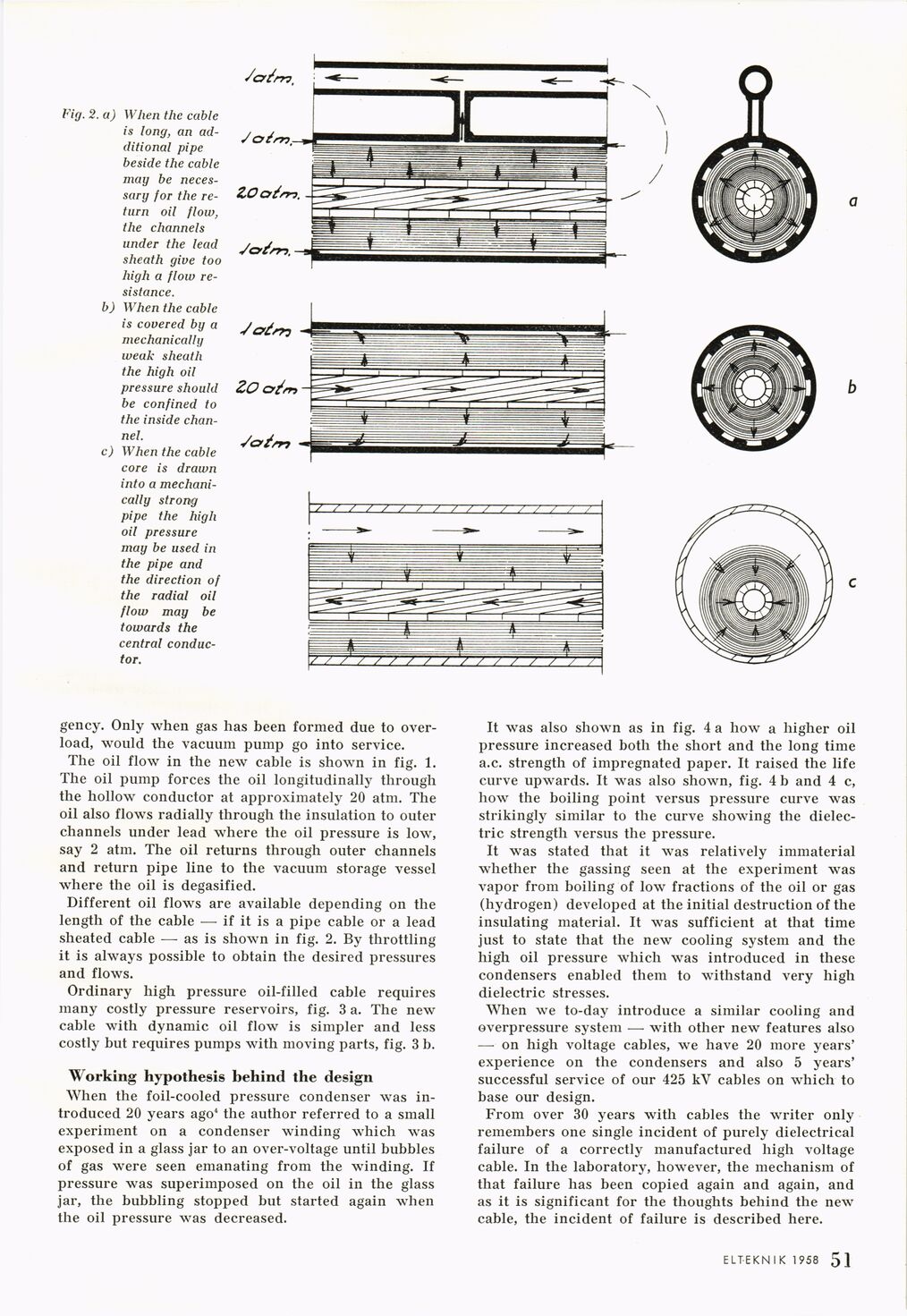
Full resolution (JPEG) - On this page / på denna sida - 1958, H. 4 - An Insulated Cable for Heavy Power Transmission, by Bror Hansson

<< prev. page << föreg. sida << >> nästa sida >> next page >>
Below is the raw OCR text
from the above scanned image.
Do you see an error? Proofread the page now!
Här nedan syns maskintolkade texten från faksimilbilden ovan.
Ser du något fel? Korrekturläs sidan nu!
This page has never been proofread. / Denna sida har aldrig korrekturlästs.
Vig. 2. a) When the cable
is long, an
additional pipe
beside the cable
may be
necessary for the
return oil flow,
the channels
under the lead
sheath give too
high a flow
resistance.
b) When the cable
is covered by a
mechanically
weak sheath
the high oil
pressure should
be confined to
the inside
channel.
c) When the cable
core is drawn
into a
mechanically strong
pipe the high
oil pressure
may be used in
the pipe and
the direction of
the radial oil
flow may be
towards the
central
conductor.
gency. Only when gas has been formed due to
overload, would the vacuum pump go into service.
The oil flow in the new cable is shown in fig. 1.
The oil pump forces the oil longitudinally through
the hollow conductor at approximately 20 atm. The
oil also flows radially through the insulation to outer
channels under lead where the oil pressure is low,
say 2 atm. The oil returns through outer channels
and return pipe line to the vacuum storage vessel
where the oil is degasified.
Different oil flows are available depending on the
length of the cable — if it is a pipe cable or a lead
sheated cable — as is shown in fig. 2. By throttling
it is always possible to obtain the desired pressures
and flows.
Ordinary high pressure oil-filled cable requires
many costly pressure reservoirs, fig. 3 a. The new
cable with dynamic oil flow is simpler and less
costly but requires pumps with moving parts, fig. 3 b.
Working hypothesis behind the design
When the foil-cooled pressure condenser was
introduced 20 years ago4 the author referred to a small
experiment on a condenser winding which was
exposed in a glass jar to an over-voltage until bubbles
of gas were seen emanating from the winding. If
pressure was superimposed on the oil in the glass
jar, the bubbling stopped but started again when
the oil pressure was decreased.
It was also shown as in fig. 4 a how a higher oil
pressure increased both the short and the long time
a.c. strength of impregnated paper. It raised the life
curve upwards. It was also shown, fig. 4 b and 4 c,
how the boiling point versus pressure curve was
strikingly similar to the curve showing the
dielectric strength versus the pressure.
It was stated that it was relatively immaterial
whether the gassing seen at the experiment was
vapor from boiling of low fractions of the oil or gas
(hydrogen) developed at the initial destruction of the
insulating material. It was sufficient at that time
just to state that the new cooling system and the
high oil pressure which was introduced in these
condensers enabled them to withstand very high
dielectric stresses.
When we to-day introduce a similar cooling and
overpressure system — with other new features also
— on high voltage cables, we have 20 more years’
experience on the condensers and also 5 years’
successful service of our 425 kV cables on which to
base our design.
From over 30 years with cables the writer only
remembers one single incident of purely dielectrical
failure of a correctly manufactured high voltage
cable. In the laboratory, however, the mechanism of
that failure has been copied again and again, and
as it is significant for the thoughts behind the new
cable, the incident of failure is described here.
ELTEKNIK 1958 1 51
<< prev. page << föreg. sida << >> nästa sida >> next page >>